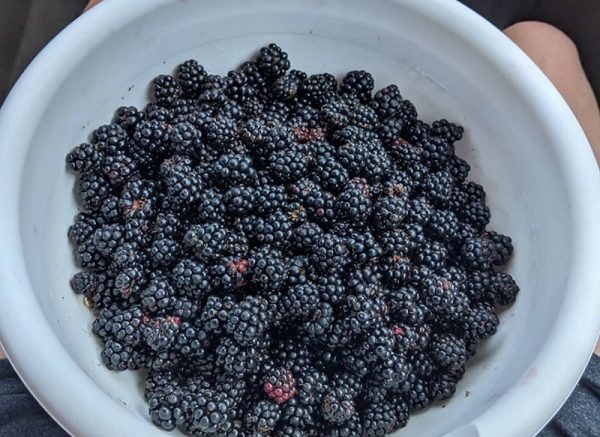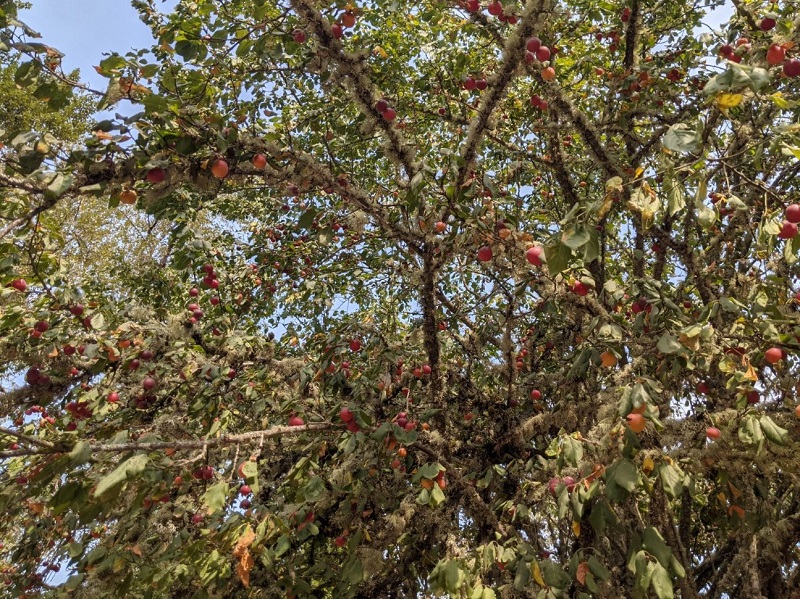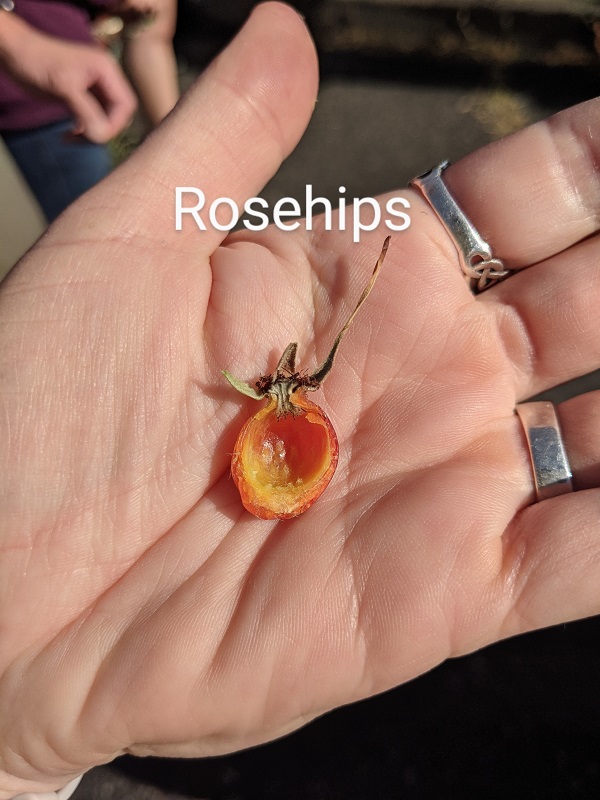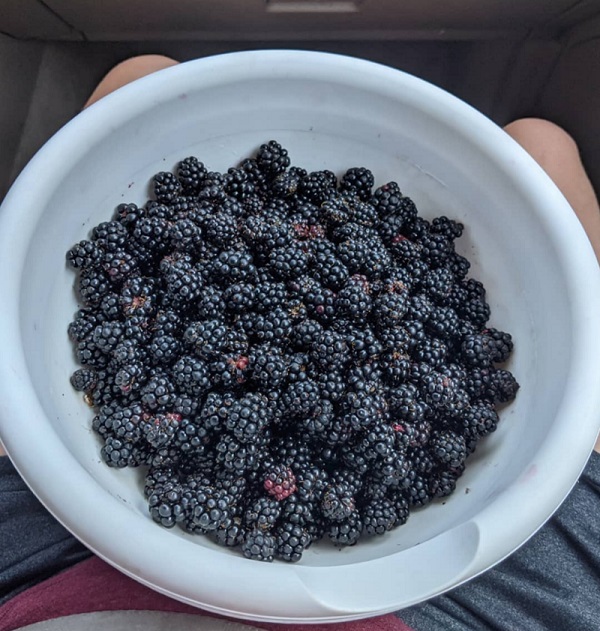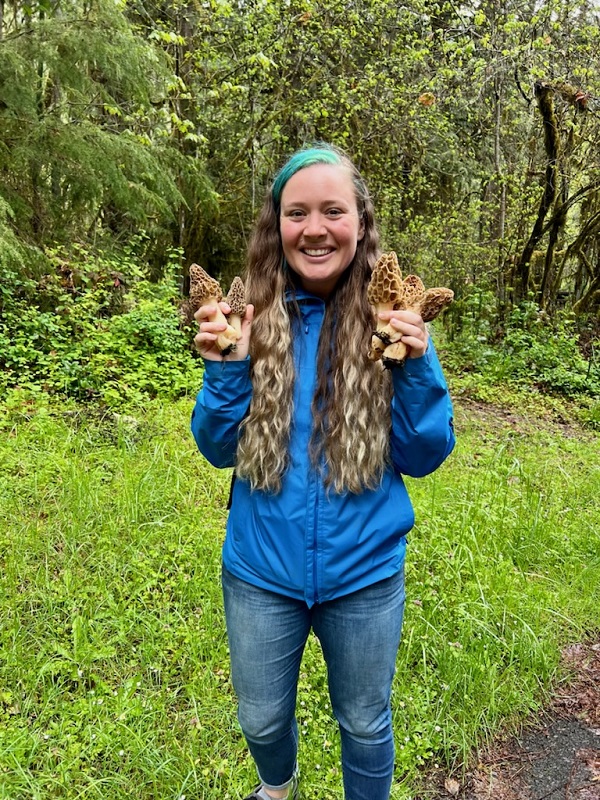Disclaimer: You should never forage/eat plants you are not able to identify and should consult with a professional to prevent any accidental poisoning or toxic consumption.
After completing a few foraging workshops, I became addicted to foraging for edible plants wherever I was walking. Staring down at the ground looking for an identifiable leaf, stem, or group of ripened fruit, and exclaiming loudly when I found something edible became my modus operandi, and I was not embarrassed about it.
As a transplant to Oregon, it is incredulous how bountiful wild edibles are in the Pacific Northwest, especially wild fruits. Fortunately for me, I don’t have to travel very far in order to forage for some of nature’s candy.
Exploring the Thurston Natural Area
Taking a short walk up the pathway at the Thurston Natural Area, one can see wild apple and cherry trees – of course, you’ll have to harvest the cherries before the birds do.
The trails are full of edible greens, such as dock and Cat’s Ear, as well as rosehips, Wild Oregon Grape, and lemon balm. For any foraging excursion, I would suggest investing in a good pair of shears and holster for easy harvesting.
Himalayan Blackberries and Thimbleberries are aligned throughout the trails in the natural area. As Thimbleberries are delicate raspberries, you will need to bring a flat container and paper towels to harvest the berries, by tapping the stem until they fall off. If they do not fall, they are not ready to be harvested.
Blackberries are prevalent throughout Oregon, to the point of being an invasive species, but that doesn’t mean you can’t enjoy their deliciously tart and sweet fruits wherever you go. You can pick blackberries by the pound, turning them into jams, jellies, pie fillings or to top off your morning oatmeal. With fruit and berries, you can never have enough canning jars to store your preserved goods. I keep shelves full of empty and full jars for preserving my harvests so I can enjoy them year-round.
Clearwater Park and Landing
While many know of this spot as a perfect place to put in a raft for an enjoyable water rafting or float trip, this area is also full of trails that are lined with plenty of foraging opportunities.
The park has a multitude of wild edible greens, such as dock, wild carrot, Cat’s Ear, dandelion, and amaranth, if you know what you’re looking for.
The best surprise foraging through Clearwater Park was discovering a native plum tree, lush with miniature stone fruit just begging to be picked. After picking only a gallon-size bag full, I had to return to pick more, only to find that this tree was discovered by others as well.
Fall Creek State Recreation Area
The Fall Creek Reservoir and Recreation area is packed full of opportunity for foraging. It is a massive wooded area, lush with berries and fruit trees, but most importantly, mushrooms.
Much like a secret fishing spot, it is not the best idea to share the exact location where you have found mushrooms, but I was fortunate enough to stumble across my first morel mushrooms in Oregon whilst walking through a local camping spot.
I don’t think I have freaked out more about finding edible foods as when my family and I found these beautiful morels. Frankly, they were everywhere and they were HUGE!
Mushroom hunting is popular around the state, as the climate is ideal for mycelium and mushroom growth. There are mushroom identifying and foraging courses available, something I would greatly recommend for safe foraging.
Oregon Permaculture Works is an independent farm, wild foraging, and fermenting business in Western Oregon that offers affordable foraging courses. If you weren’t very successful finding wild mushrooms, they also deliver mushrooms to your door (as long as you live within the area).
Forager for Life
Foraging is incredibly cheap (often free!) and an empowering way to spend your free time, especially during the Pandemic and times of high-inflation. It can be done solo or with friends or family, and is a great opportunity to distract yourself from hard times. Most importantly, it is a time to connect to nature and all that she has to provide.
To read more about some of the foraging workshops I have attended in the Willamette Valley area, check out this blog post about Wild Food Adventures here.

